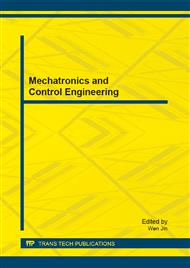p.732
p.737
p.742
p.751
p.756
p.762
p.766
p.772
p.778
Hybrid Prediction Method of Flight Accident Based on ARIMA and SVM
Abstract:
The main target of flight accident prediction is to prevent the accident. To improve the pertinence and efficiency, the prediction must be strengthened to raise initiative of accident prevention. A hybrid prediction method, based on Auto-Regressive Integrating Moving Average (ARIMA) and Support Vector Machine (SVM), is proposed. First, ARIMA model is established to describe the linear relation in historical data, and then SVM model is built with regard to the residual error of ARIMA model in order to simulate the nonlinear law in historical data. The sum of prediction value of two models is to final hybrid prediction result. An application example show that the model based on this hybrid method has a good prediction to flight accident, and also is better than ARIMA or SVM model.
Info:
Periodical:
Pages:
756-761
Citation:
Online since:
July 2013
Authors:
Price:
Сopyright:
© 2013 Trans Tech Publications Ltd. All Rights Reserved
Share:
Citation:


